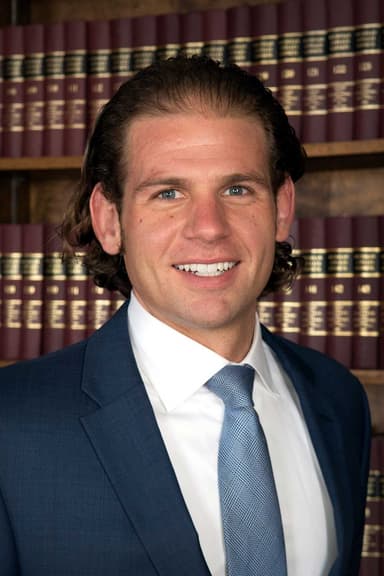

Vince Colella · Jon Marko
$2,750,000 Verdict for Dental/Medical Malpractice Case - Vince Colella, Webinar Hosted by Jon Marko
![]() May 10, 2022 ||TLU n Demand
May 10, 2022 ||TLU n Demand
Case Name: Giorgio Webster v Dr. Jeffrey Osguthorpe and Summit Oral and Maxillofacial Surgery, P.C. (Case No. 19-003783)
Plaintiff: 32-years of age, married, 4 children and employed as a sales representative in the environmental waste management industry Bachelors degree in Business and Masters degree in information trchnology.
Nature of Case: Dental/Medical Malpactice Filing Date: 9/23/19
Venue: Macomb County Circuit Court/Assigned to Judge James Biernat/Trial by Visiting Judge, Thomas Brookover Defense Counsel: Keith Felty Insurance Coverage: OMS ($1,000,000) Case Evaluation Award: $195,000 (accepted by Plaintiff/rejected by Defendant Pre-Trial Offers: Zero/Defendant (Oral Surgeon) withheld consent to settle
Verdict: $2,750,000 ($68,000.00/economic damages; $1,375,000/past and present non-economic damages, plus $1,307,000 future non- economic damages.) Case Summary:
Plaintiff was referred to the defendant oral surgeon for examination and removal of his lower left wisdom tooth (#17). During his first visit, a panoramic x ray of the plaintiff’s mouth was taken. Defendant reviewed the film study and discovered a “radiolucency” (dark spot) near the effected tooth in the ramus of the mandible (lower jaw). Defendant recommended that the plaintiff undergo a biopsy to determine whether the lesion was cancerous. Defendant also ordered a CT scan without contrast. The CT scan was performed a couple months after the initial visit. The radiologist reported that the CT film study was “sub-optimal due to lack of iv contrast” and recommended an MRI with iv contrast. However, the defendant claimed that the MRI would be of no benefit and scheduled the plaintiff for the removal of the lower wisdom tooth and an incisional biopsy (taking a sample of the lesion to send for lab testing) without additional testing. On April 20, 2018 (5 days after the wisdom tooth was extracted), Plaintiff presented to the Defendant’s office for an “incision” and biopsy signing a consent form to that effect. However, after the Plaintiff had been sedated the Defendant changed the procedure (and documentation) from an “incision” and biopsy to an “excision” and biopsy. Essentially, converting the procedure from taking a piece of this mass to attempting to remove it entirely. During the course of trying to remove what the Defendant believed to be a “cystic mass” he encountered an arteriovenous malformation (AVM) also known as a “vascular malformation.” As he drilled into the AVM the Defendant injured the carotid and lingual arteries causing a massive hemorrhage in the Plaintiff’s mouth. Paramedics were called to the office and Plaintiff was transported to a nearby hospital. However, when the ER doctors were unable to stop the bleed, plaintiff was intubated and airlifted to a level 1 trauma center where he underwent an emergency embolization surgery to stop the bleeding and save his life.
Plaintiff argued that the Defendant breached the oral surgery standards of care in the following manners: (1) failure to obtain proper permission for the surgery; (2) failure to obtain the proper diagnostic tests, i.e., MRI or angiogram; (3) failure to “needle aspirate” the mass or lesion prior to attempting to remove all or part of it; (4) and negligently entering the AVM with a drill.
Defendant claimed that he did not breach the standards of care. He claimed that an MRI with contrast was not warranted nor delineate the mass from a vascular lesion. He further claimed that an AVM of the ramus was so rare (comparing it to a “unicorn”) that it should not be considered as part of a differential diagnosis.
**The trial lasted 3 days. The jury delivered their verdict in 1 hour and 15 minutes having never requested a copy of the trial exhibits. Plaintiff asked the jury for 2.63 million. The jury awarded more than we asked.
Vince will discuss:
Conducting voir dire/selection of jurors (including use of the juror pre-trial questionnaires). Use of TLU voir dire templates to coax jurors out of their comfort zone and “honestly” answer questions about their opinions, beliefs and experiences that may affect their ability to be fair and impartial Simplifying the case from a medical standpoint to make it easier for the jury to understand what the doctor did wrong Overcoming bad and contradictory testimony of the Plaintiff’s own expert Cross examination of the Defendant and his “polished “ expert Use of emotional and visual imagery in closing to prevent jurors from “overthinking” the case
If you can't attend Live, Watch On Demand